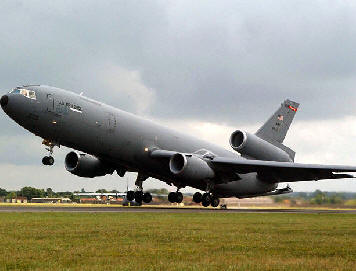|
|||||||||||
|
|
|
|||
|
By Daniel Baxter |
||||
 |
June 24, 2010 - Boeing announced that it has received a $216 million contract from the U.S. Air Force to upgrade the service's 59-jet KC-10 tanker fleet with a new communication, navigation, surveillance and air traffic management (CNS/ATM) system. The KC-10 upgrade will enable the fleet to comply with the forecasted 2015 CNS/ATM Federal Aviation Administration International Civil Aviation Organization standards, which allow shared access within both civil and military airspace, enabling tanker refueling operations worldwide. "As air traffic continues to increase, modern CNS/ATM systems become essential for communicating precise flight data and obtaining the most direct routing," said Mike Harris, Boeing vice president of Weapon Systems Modernization. "This upgrade is critical to the Air Force for pilots' safety, mission effectiveness and lower operational costs." |
|||
|
|
||||
|
The five-year
contract draws on design and development work performed by Boeing
Defense, Space & Security and Boeing Commercial Airplanes. The contract
will be managed at the Boeing Long Beach, Calif., facility. The first
airplane will be modified and flight-tested in 2012 at the company's CNS/ATM stands for Communications, Navigation and Surveillance Systems for Air Traffic Management. The system uses digital technologies, including satellite systems, and varying levels of automation to achieve a seamless global Air Traffic Management system. The KC-10 Extender is an air-to-air tanker aircraft in service with the United States Air Force derived from the civilian DC-10-30 airliner. The KC-10 was the second consecutive McDonnell Douglas transport aircraft to be selected by the US Air Force following the C-9 Nightingale. McDonnell Douglas merged with Boeing in 1997.
Introduced in
1981, there were 60 KC-10 built through 1987 at a cost of $88.4 million
US. The KC-10 was delivered to the USAF Strategic Air Command (SAC)
(then in control of |
||||


